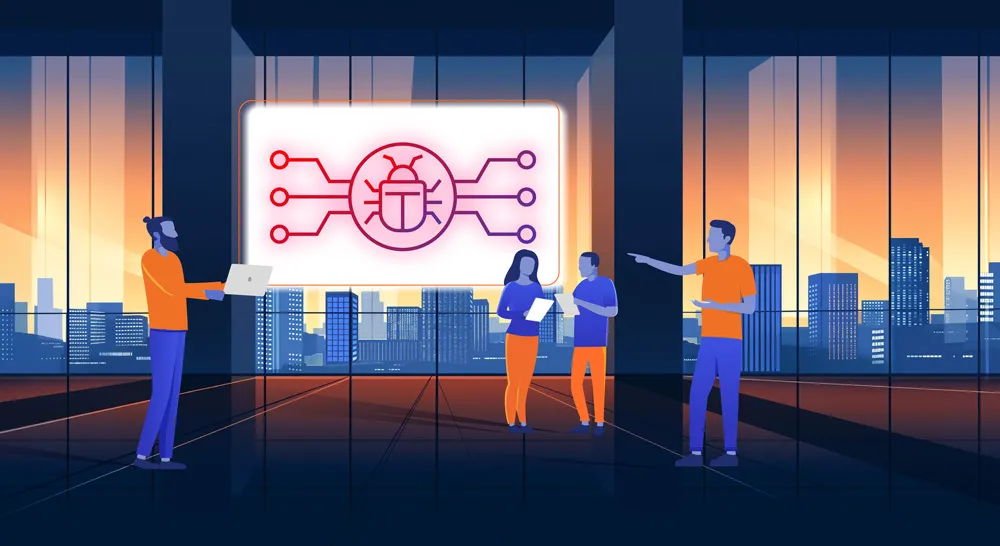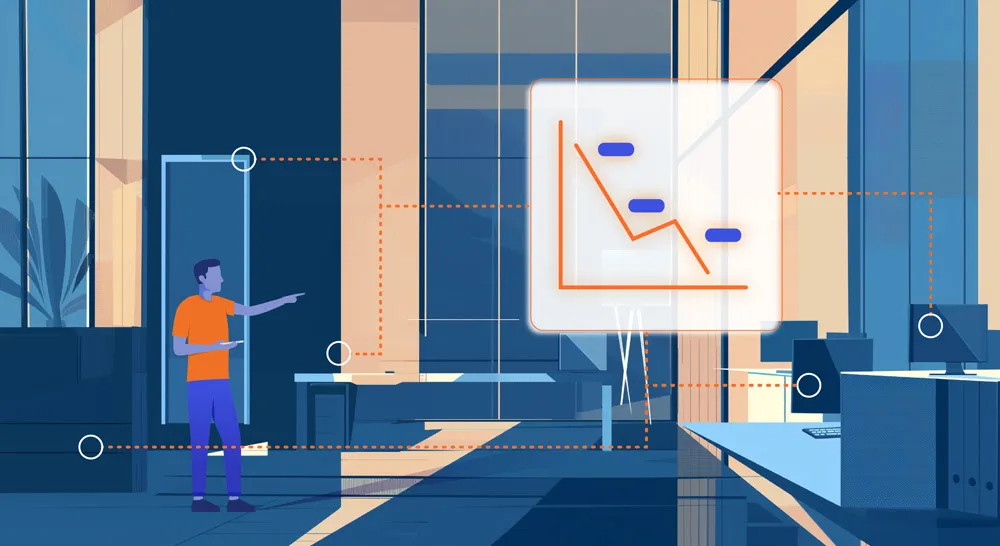
In today’s digital age, where technology is rapidly advancing, cybersecurity has become more critical than ever. Cybersecurity refers to the set of technologies, processes, and practices designed to protect digital devices, networks, and data from cyber threats. With the increase in the number of cyber-attacks and data breaches, it has become essential to take cybersecurity seriously. In this article, we will explore the 6 types of cybersecurity, their importance, and how to prevent cyber attacks.
Why Is Cybersecurity Important?
Cybersecurity is essential for the following reasons:
Protection of Confidential Information:
Confidential information such as financial data, personal information, and intellectual property are prone to cyber-attacks. Cybersecurity measures help to protect this information from unauthorized access, modification, or destruction.
Compliance with Regulations:
Various regulations and laws, such as HIPAA, GDPR, and PCI DSS, require organizations to secure their data and networks from cyber-attacks.
Protection of Reputation:
A cyber-attack can significantly damage an organization’s reputation, leading to a loss of business and trust from customers and stakeholders.
Prevention of Financial Losses:
A cyber-attack can cause significant financial losses, such as loss of revenue, lawsuits, and fines.
Business Interruption
Cybersecurity is vital to prevent and mitigate such interruptions, safeguarding a company’s stability and continuity in the face of digital threats.

Types of Cybersecurity Threats:
Cybersecurity threats can come in various forms, and the following are the most common types of cybersecurity threats:
Malware: Malware is malicious software designed to harm or gain unauthorized access to a computer system. It includes viruses, worms, and Trojans.
Phishing: Phishing is a type of social engineering attack where cybercriminals trick people into giving away sensitive information such as usernames, passwords, and credit card details.
Ransomware: Ransomware is a type of malware that encrypts data on a victim’s computer and demands payment in exchange for the decryption key.
Denial of Service (DoS) Attacks: A DoS attack is an attempt to overwhelm a network or website with traffic, causing it to crash or become unavailable.
Insider Threats: Insider threats occur when an employee or contractor with authorized access to sensitive data or systems intentionally or unintentionally causes harm to an organization.
Advanced Persistent Threats (APTs): APTs are complex, targeted attacks designed to gain unauthorized access to a network or system and remain undetected for an extended period.
Now that we’ve discussed the most common types of cybersecurity threats let’s take a closer look at the six types of cybersecurity.
1. Network Security:
Network security is the practice of securing a computer network from unauthorized access or attacks. It includes the use of firewalls, intrusion detection and prevention systems, and virtual private networks (VPNs). The primary goal of network security is to protect a network’s infrastructure, including servers, routers, switches, and other network devices.
Key features of network security:
- Network monitoring and management tools
- Access control and authentication systems
- Data encryption and decryption methods
- Firewall technology
- Regular security audits
2. Application Security:
Application security refers to the measures taken to secure software applications from cyber-attacks. It includes testing the code, identifying vulnerabilities, and ensuring that the application is free from any security flaws. Application security can be implemented at various stages of the software development life cycle, from planning to deployment.
Key features of application security:
- Code review and vulnerability scanning
- Use of secure coding practices
- Implementation of secure authentication and authorization mechanisms
- Regular security testing and update
3. Information Security:
Information security involves the protection of digital information, such as data stored in databases, files, or other repositories. Information security ensures the confidentiality, integrity, and availability of data by protecting it from unauthorized access, disclosure, modification, or destruction. It includes various security measures such as access control, encryption, and backups.
Key features of information security:
- Use of access control mechanisms such as passwords, biometric verification, or two-factor authentication
- Encryption of sensitive data at rest and in transit
- Regular backups of critical data
- Implementation of disaster recovery and business continuity plans
- Monitoring and logging of system and network activity
4. Cloud Security:
Cloud security refers to the protection of data and systems hosted on cloud platforms, such as Amazon Web Services (AWS), Microsoft Azure, and Google Cloud. Cloud security includes a combination of technical and administrative controls that aim to secure data stored in the cloud, as well as the cloud infrastructure itself.
Key features of cloud security:
- Use of secure cloud configurations and virtual private networks
- Implementation of identity and access management controls
- Encryption of data at rest and in transit
- Regular security audits and compliance checks
5. Internet of Things (IoT) Security:
The Internet of Things (IoT) refers to the network of connected devices, such as smartphones, smart homes, and wearables. IoT security involves securing the devices themselves, as well as the network that connects them. As the number of IoT devices increases, so does the risk of cyber-attacks.
Key features of IoT security:
- Implementation of secure communication protocols
- Regular software updates and patches
- Use of strong authentication and access control mechanisms
- Data encryption and integrity checks
- Regular vulnerability assessments and penetration testing
6. Identity and Access Management (IAM):
Identity and Access Management (IAM) is the practice of managing user identities and controlling access to resources within an organization. IAM includes various security measures such as user authentication, authorization, and access control.
Key features of IAM:
- Use of strong authentication mechanisms such as biometric verification or two-factor authentication
- Implementation of role-based access control
- Regular security audits and compliance checks
- Implementation of password policies and regular password updates
How to Prevent Cyber Attacks?
Preventing cyber attacks involves a combination of technical, administrative, and educational measures. The following are some of the most effective ways to prevent cyber attacks:
Use of Antivirus and Anti-malware Software:
Antivirus and anti-malware software are essential tools that can help protect your computer from various cyber threats such as viruses, spyware, and ransomware. Ensure that your antivirus and anti-malware software is up to date and regularly run scans to detect any potential threats.
Regular Software Updates:
Software updates often include security patches that fix known vulnerabilities. Ensure that you regularly update all software applications, including your operating system, web browsers, and other applications.
Strong Passwords and Multi-Factor Authentication:
Strong passwords and multi-factor authentication can help prevent unauthorized access to your accounts. Ensure that you use a combination of upper and lowercase letters, numbers, and symbols in your passwords. Additionally, enable multi-factor authentication for all accounts that offer it.
Education and Awareness:
Cybersecurity education and awareness can help individuals and organizations identify potential cyber threats and take necessary precautions. Ensure that you and your employees receive regular cybersecurity training to stay updated with the latest threats and security best practices.
Conclusion:
In conclusion, cybersecurity is essential in today’s digital age, where cyber threats are becoming more sophisticated and frequent. The 6 types of cybersecurity measures discussed in this article – network security, application security, information security, cloud security, IoT security, and identity and access management – can help protect organizations and individuals from cyber attacks. Additionally, following best practices such as using antivirus software, regularly updating software, using strong passwords and multi-factor authentication, and providing cybersecurity education and awareness can further help prevent cyber attacks. By taking a proactive approach to cybersecurity, we can help ensure the safety and resilience of our digital environments, safeguarding sensitive data and maintaining the trust and integrity of our systems in an increasingly connected world.
Your Complete Cyber Security Partner:
Every Step, Every Threat.
At CYPFER, we don’t just protect your business—we become part of it.
As an extension of your team, our sole focus is on cyber security, ensuring your peace of mind. From incident response and ransomware recovery to digital forensics and cyber risk, we integrate seamlessly with your operations. We’re with you 24×7, ready to tackle threats head-on and prevent future ones.
Choose CYPFER, and experience unmatched dedication and expertise. Trust us to keep your business secure and resilient at every turn.

Get Cyber Certainty™ Today
We’re here to keep the heartbeat of your business running, safe from the threat of cyber attacks. Wherever and whatever your circumstances.
Contact CYPFER





